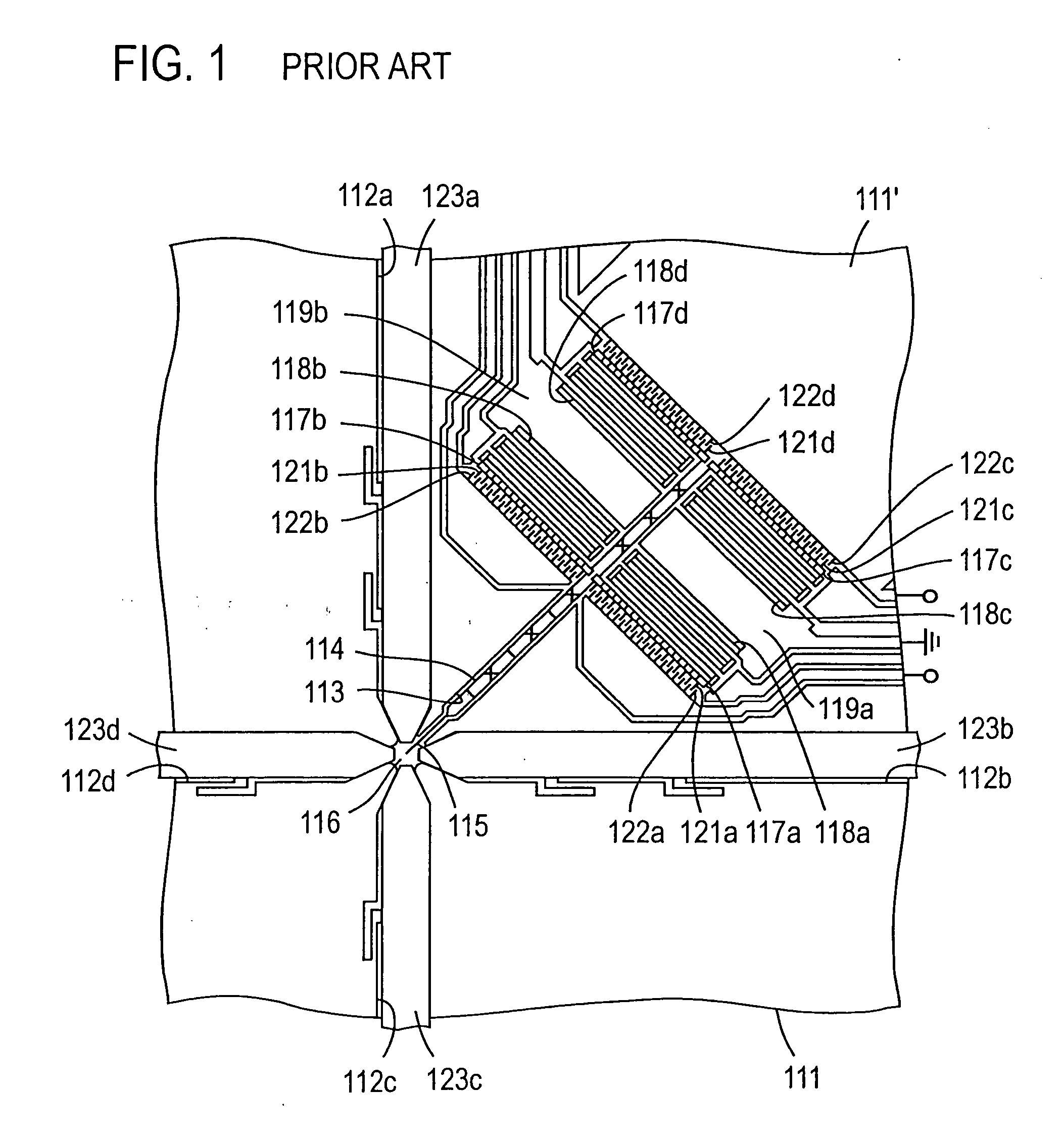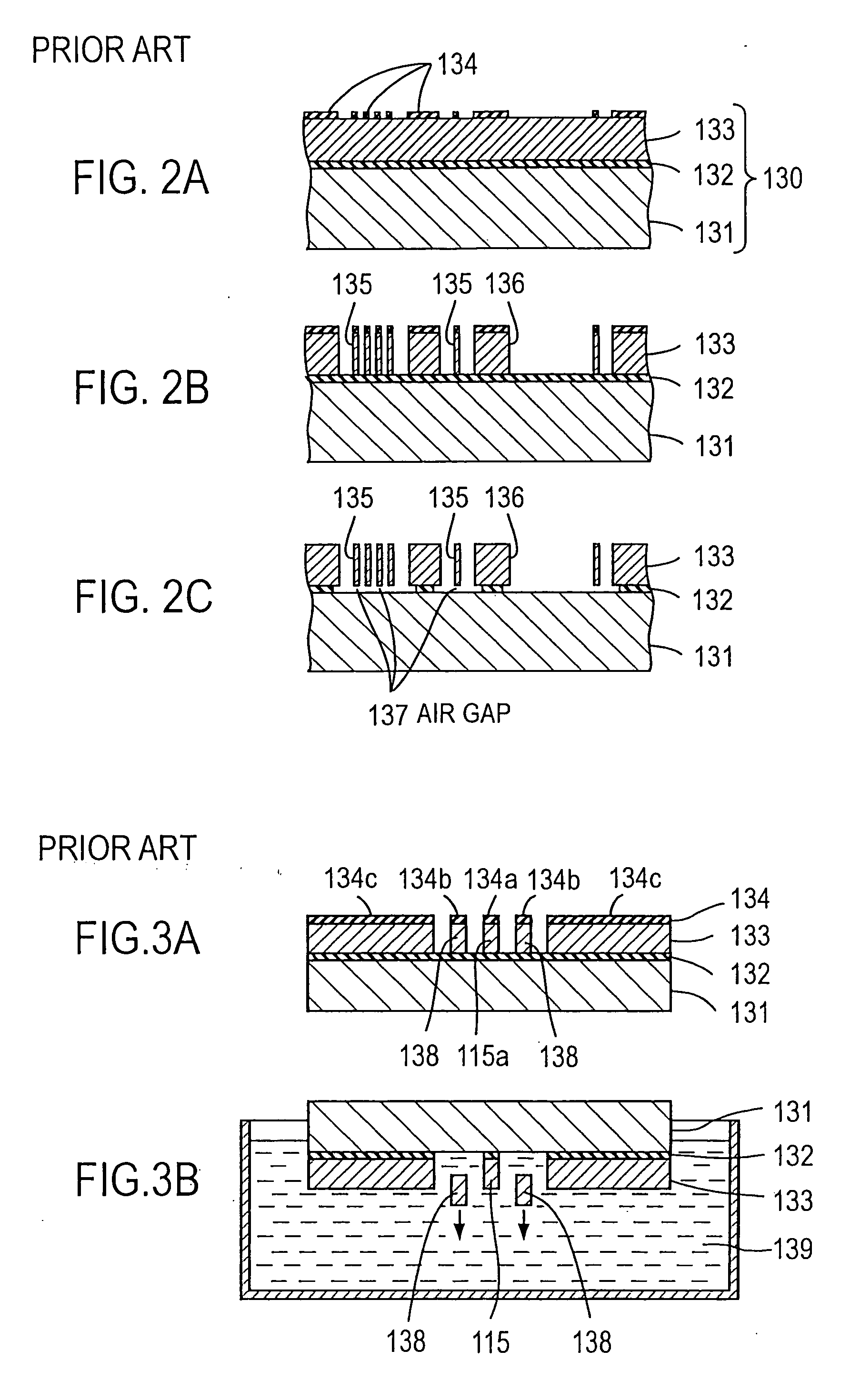Micro-optic device and method of manufacturing same
a micro-optic and optical device technology, applied in the direction of optical elements, instruments, coatings, etc., can solve the problems of inability to have a favorable reflection response of the mirror, unevenness of the etched sidewall surface in excess of the order of 100 nm, and the difficulty of manufacturing an optical device for a micro-electromechanical system having a complicated construction, etc., to achieve rapid etching, reduce the time interval for wet etching, and achieve rapid
- Summary
- Abstract
- Description
- Claims
- Application Information
AI Technical Summary
Benefits of technology
Problems solved by technology
Method used
Image
Examples
Embodiment Construction
An embodiment of the present invention applied to the micro-optic switch will now be described below with reference to the drawings. In the description to follow, it should be noted that throughout the drawings, corresponding parts are designated by like reference numbers without their repeated description.
As shown in plan view in FIG. 4 and in cross sections in FIG. 5, an SOI three layer structure includes a sheet-like single crystal silicon substrate 31 having a top surface 31u in which fiber channels 1 are formed in a crisscross configuration. Four fiber channels 1A to 1D extend radially from the center 1c of an area of intersection between the crisscross fiber channels 1, and optical fibers 32A to 32D are inserted into the respective fiber channels. As shown in FIG. 6, the width of fiber channels 1A to 1D is defined so close to diameters of optical fibers 32A-32D that the fibers pressed into channels are fixed within the channels, and the end face of each optical fiber is dis...
PUM
| Property | Measurement | Unit |
|---|---|---|
| narrow angle | aaaaa | aaaaa |
| angle | aaaaa | aaaaa |
| thickness | aaaaa | aaaaa |
Abstract
Description
Claims
Application Information
 Login to View More
Login to View More - R&D
- Intellectual Property
- Life Sciences
- Materials
- Tech Scout
- Unparalleled Data Quality
- Higher Quality Content
- 60% Fewer Hallucinations
Browse by: Latest US Patents, China's latest patents, Technical Efficacy Thesaurus, Application Domain, Technology Topic, Popular Technical Reports.
© 2025 PatSnap. All rights reserved.Legal|Privacy policy|Modern Slavery Act Transparency Statement|Sitemap|About US| Contact US: help@patsnap.com



